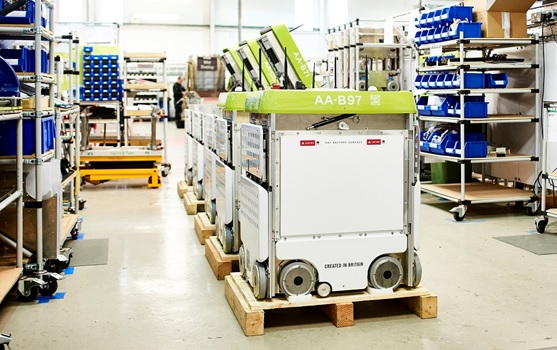Currently 80% of warehouses are manually operated without automation support, however, many logistics companies are looking to turn to robotics for efficiency, accuracy and long-term cost savings.
In conjunction with Tharsus, the UK’s number one designer and manufacturer of autonomous system robots, Michael Page Logistics held a presentation evening on the 25th of January for senior professionals to discuss how robotics and automation are shaping the future of the logistics industry.
Guest speaker Tim Ensor, CCO for Tharsus, discussed how their partnership with Ocado has led to the production of the robots within Ocado’s highly intelligent and sophisticated warehousing system that can reduce order picking time from 2 hours to 5-10 minutes. Ocado has always been at the forefront of using technology, even in their initial warehouses which boast miles of conveyors and advanced automation equipment. Their new concept voids the traditional warehouse racking system with aisles and instead is supported by a grid (referred to as the hive) with individual crates stacked on top of each other. Their site in Andover will soon have 1000 robots collecting the crates to create customer orders. The model reduces footprint, drives efficiency and delivers accurate results.

Ocado has definitely raised the bar for automation in grocery logistics; their new ‘smart platform’ provides the opportunity for other international grocery retailers to utilise their robotic system, with the company recently announcing agreements to use the technology with GROUPE Casino in Paris and Sobeys in Toronto. But what does the future hold for Ocado? The business is investing in a number of new technologies including; automated vans, robot side pick stations and a robot suction cup that can then pick any SKU.
It’s not just Ocado that is making futuristic concepts a reality; car manufacturing companies have been subtly injecting elements of autonomy into vehicles for years. Most cars today will have autonomous functions including; active cruise control, park assist and collision avoidance systems.
For many businesses, there will be an evolution where robotics makes sense. As a rule, you need to identify whether a human or a robot will give you the best service or whether you need both. The most commercially viable solution for many logistics companies in the current market is Cobots; this is where the machine fundamentally works hand in hand with people. The machine understands the optimisation and can provide efficient support whilst the human is the manipulator. Looking to the future and considering labour availability alongside cost many businesses may consider a fully autonomous robot with humans just as coordinators.
As labour availability is a major driver in the current market, any company with a high labour requirement (non-customer facing) can utilise the technological advances in robotics. Typical industries looking at automating processes include agricultural, food manufacturing and retail.
Michael Page Logistics pride themselves on providing up-to-date insightful information on current trends in the market. This allows us to play a key advisory role for both our candidates and clients. Speak to our Michael Page Logistics team today, for advice on either finding the right role, or the right candidates for your recruitment requirements.
Jessica Ingram
Business Manager, Michael Page Logistics
T: +44 121 230 9441